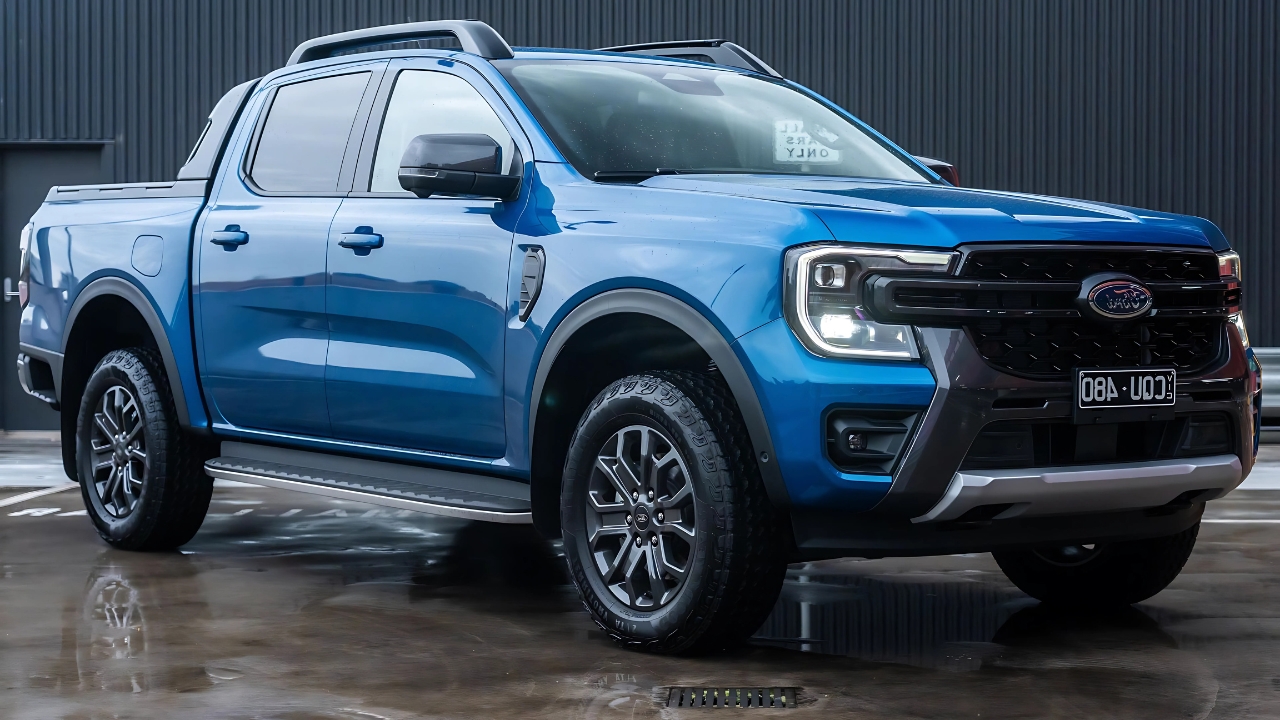Ford Ranger : Ford Australia’s most popular models, the Ranger pickup truck and Everest SUV, have experienced modest price increases across their lineups this July 2025. These adjustments affect Australia’s best-selling vehicle, with the Ford Ranger maintaining its market-leading position throughout 2023, 2024, and the first half of 2025. The timing of these price adjustments coincides with the implementation of Australia’s New Vehicle Efficiency Standard (NVES) penalties, though Ford attributes the increases to broader market factors.
Current Market Performance and Sales Leadership
The Ranger and Everest led Ford to its best sales month in 16 years during June 2025, with 10,103 sales placing both vehicles as the first and fifth best-selling models across all makes for that month. This remarkable performance demonstrates the enduring appeal of Ford’s utility vehicle offerings in the Australian market.
Together with the Mustang sports car, these three models have comprised 92 percent of all Ford vehicles sold in Australia during the first six months of 2025, highlighting the brand’s heavy dependence on these core models for market success.
Detailed Price Adjustment Breakdown
Ford Ranger Price Changes
All Rangers, except the newly launched Ranger PHEV (plug-in hybrid), have received a $250 increase. This adjustment brings the entry-level Ford Ranger to a starting price of $37,130 before on-road costs, while the flagship Ranger Raptor now commands $90,690 plus on-roads.
The newly released Ranger PHEV has been exempted from price increases, maintaining its pricing between $71,990 and $86,990 across four model grades. This strategic decision likely reflects Ford’s commitment to promoting electrified alternatives while managing emission compliance costs.
Ford Everest Pricing Updates
The Everest SUV has seen more varied price adjustments across its range. Four-cylinder versions increased by $250, while V6 models experienced larger increases ranging from $540 to $1,190.
Specific Everest pricing changes include:
- Everest Sport V6: increased from $74,640 to $75,540 plus on-roads ($900 increase)
- Everest Tremor V6: rose from $76,590 to $77,490 ($900 increase)
- Everest Wildtrak: now priced at $77,490 plus on-roads ($540 increase)
- Everest Platinum: experienced the largest increase of $1,190, now priced at $82,390 before on-road costs (including luxury car tax)
2025 Ford Ranger and Everest Pricing Table
| Model | Previous Price (AUD) | New Price (AUD) | Increase |
|---|---|---|---|
| Ranger (Entry Level) | $36,880 | $37,130 | $250 |
| Ranger Raptor | $90,440 | $90,690 | $250 |
| Everest Sport V6 | $74,640 | $75,540 | $900 |
| Everest Tremor V6 | $76,590 | $77,490 | $900 |
| Everest Wildtrak | $76,950 | $77,490 | $540 |
| Everest Platinum | $81,200 | $82,390 | $1,190 |
*All prices exclude on-road costs
Regulatory Environment and Emissions Standards
New Vehicle Efficiency Standard Impact
The price increases coincide with July 1, 2025, when CO2 penalties began accruing under Australia’s New Vehicle Efficiency Standard (NVES). While Ford cited NVES as a factor in the Mustang’s $5,000 price increase, the company has not explicitly linked the utility vehicle price adjustments to emissions compliance costs.
For ‘Type 2’ vehicles such as the Ranger and Everest, NVES targets are 210g/km in 2025, 180g/km in 2026, 150g/km in 2027, 122g/km in 2028, and 110g/km in 2029. Current diesel Ranger emissions range between 199-211g/km for single-turbo four-cylinder engines, 182-189g/km for bi-turbo four-cylinder units, and 222g/km for V6 engines.
Engine Availability Concerns
The 2.0-liter four-cylinder turbo-diesel ‘Panther’ engine used in both the Ranger and Everest was recently discontinued in the UK due to tightening emissions regulations. Ford Australia has not announced any immediate plans to discontinue this engine locally, but its CO2 emissions exceed 2026 NVES thresholds for Type 2 vehicles.
Ford’s Official Response and Market Factors
Ford Australia has attributed these price adjustments to multiple market influences rather than solely regulatory pressures. “A range of market factors and other considerations impact pricing, and from time to time we adjust our recommended manufacturer’s list prices based on these,” Ford stated.
The company previously indicated that NVES costs would eventually impact consumer pricing, and these adjustments represent the materialization of those warnings. Other factors typically affecting pricing include shipping and logistics costs, exchange rates, market dynamics, and customer demand.
No Equipment Enhancements
Unlike previous price increases that often included additional features or equipment upgrades, these 2025 adjustments do not bring any specification or equipment changes. This approach differs from Ford’s historical practice of bundling price increases with value-added features, making these adjustments purely cost-driven rather than value-enhancement initiatives.
Industry Implications
Competitive Landscape
These price adjustments occur within a highly competitive mid-size pickup and large SUV market. The Ranger faces competition from vehicles like the Toyota HiLux, Mitsubishi Triton, and Volkswagen Amarok, while the Everest competes against the Toyota Fortuner, Mitsubishi Pajero Sport, and Isuzu MU-X.
Electrification Strategy
Ford’s decision to exempt the Ranger PHEV from price increases signals the company’s strategic commitment to electrified alternatives. This approach aligns with global automotive trends toward reduced emissions while maintaining competitive positioning in the evolving Australian market.
The success of these models despite price increases demonstrates strong consumer loyalty and the effectiveness of Ford’s product positioning. As emissions regulations tighten and market conditions evolve, Ford’s ability to maintain its market leadership while managing cost pressures will be crucial for continued success in Australia’s competitive automotive landscape.
Frequently Asked Questions
Q: Will these price increases affect existing orders? A: The price increases typically apply to new orders placed after July 1, 2025. Existing confirmed orders should honor previous pricing agreements.
Q: Are similar price increases expected for other Ford models? A: Ford has already increased Mustang pricing by $5,000 in July 2025, suggesting the company is adjusting prices across its range in response to market conditions.
Q: Do the price increases include any additional features or warranties? A: No, these price adjustments do not include any additional equipment, features, or extended warranty coverage
